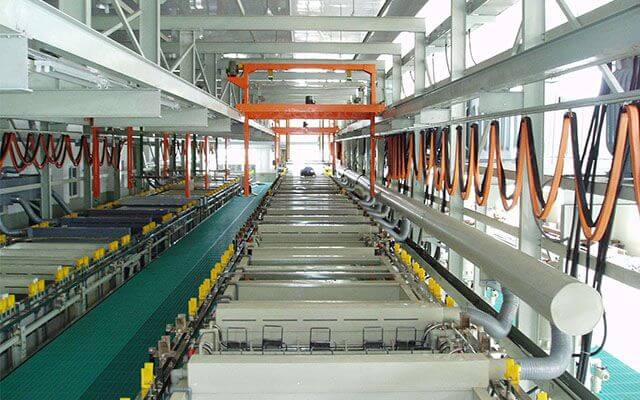
Let’s start with the following terminology.
copper plating treatment: copper watering can, an unstoppable metal, has been used for most of human existence. Maybe it was one of the first metals used by humans. Although copper was often used for religious purposes, it was found to have practical benefits. Since copper is an excellent conductor of electricity, electroplating copper is the best choice for metal surfaces. The copper plating process can be challenging because it requires high technology, precision and great patience.
stainless steel 201: copper watering can 201 stainless steel is an alloy that contains half the nickel and more manganese and nitrogen than other popular steels. While it is less expensive than some other alloys (because of its low nickel content), it is not as easy to work or form. Type 201 is an austenitic metal because it is non-magnetic stainless steel that contains high levels of chromium and nickel and low levels of carbon.
stainless steel 304: copper watering can 304 stainless steel is the most widely used stainless steel and contains 18-20% Cr and 8-10.5% Ni, also known as 18-8 stainless steel. Type 304 is non-magnetic under annealed conditions, but after cold working (e.g., stamping, drawing, bending, rolling), a portion of the austenitic structure may change to martensite and is therefore weakly magnetic. AISI 304 has good resistance to atmospheric corrosion and oxidation. The high NiCr alloy content gives it excellent corrosion resistance and it is widely used in the food industry as a standard food grade stainless steel.
Approximate professional production process.
1. Shell processing process Outer tube receiving material – Cutting tube – Expanding – Segmenting – Expanding – Rolling the middle angle – Shrinking the bottom – Cutting the bottom – Punching – Flat upper mouth – Punching the bottom – Flat bottom mouth – Cleaning and drying – Inspection and hammering – Qualified casing
2. Inner Shell Processing Process Receiving material for inner pipe – Cutting pipe – Flat pipe – Expanding – Rolling top corner – Flat top opening – Flat bottom opening – Rolling threads – Cleaning and drying – Inspection and knocking pit – Butt welding – Water testing and leak testing – Drying – Qualified inner pipe
3. Shell and inner case assembly process Cups – welding mouth – pressure bottom – welding bottom – inspection welding mouth welding bottom – bottom spot welding aspirate – vacuum – temperature measurement – electrolysis – polishing – temperature measurement – inspection polishing – pressure bottom – spray paint – sampling temperature measurement – inspection spray paint – screen printing – packaging – finished product storage.
Heat can be transmitted in three ways: radiation, convection, and transfer.
Let’s start with the following terminology.
copper plating treatment: copper watering can, an unstoppable metal, has been used for most of human existence. Maybe it was one of the first metals used by humans. Although copper was often used for religious purposes, it was found to have practical benefits. Since copper is an excellent conductor of electricity, electroplating copper is the best choice for metal surfaces. The copper plating process can be challenging because it requires high technology, precision and great patience.
stainless steel 201: Type 201 stainless steel is an alloy that contains half the nickel and more manganese and nitrogen than other popular steels. While it is less expensive than some other alloys (because of its low nickel content), it is not as easy to work or form. Type 201 is an austenitic metal because it is non-magnetic stainless steel that contains high levels of chromium and nickel and low levels of carbon.
stainless steel 304: 304 stainless steel is the most widely used stainless steel and contains 18-20% Cr and 8-10.5% Ni, also known as 18-8 stainless steel. Type 304 is non-magnetic under annealed conditions, but after cold working (e.g., stamping, drawing, bending, rolling), a portion of the austenitic structure may change to martensite and is therefore weakly magnetic. AISI 304 has good resistance to atmospheric corrosion and oxidation. The high NiCr alloy content gives it excellent corrosion resistance and it is widely used in the food industry as a standard food grade stainless steel.
Share this:
- Click to share on Twitter (Opens in new window)
- Click to share on Facebook (Opens in new window)
- Click to share on Pinterest (Opens in new window)
- Click to share on WhatsApp (Opens in new window)
- Click to share on Telegram (Opens in new window)
- Click to share on LinkedIn (Opens in new window)
- Click to share on Reddit (Opens in new window)
- Click to share on Pocket (Opens in new window)
- Click to share on Tumblr (Opens in new window)
- Click to print (Opens in new window)

